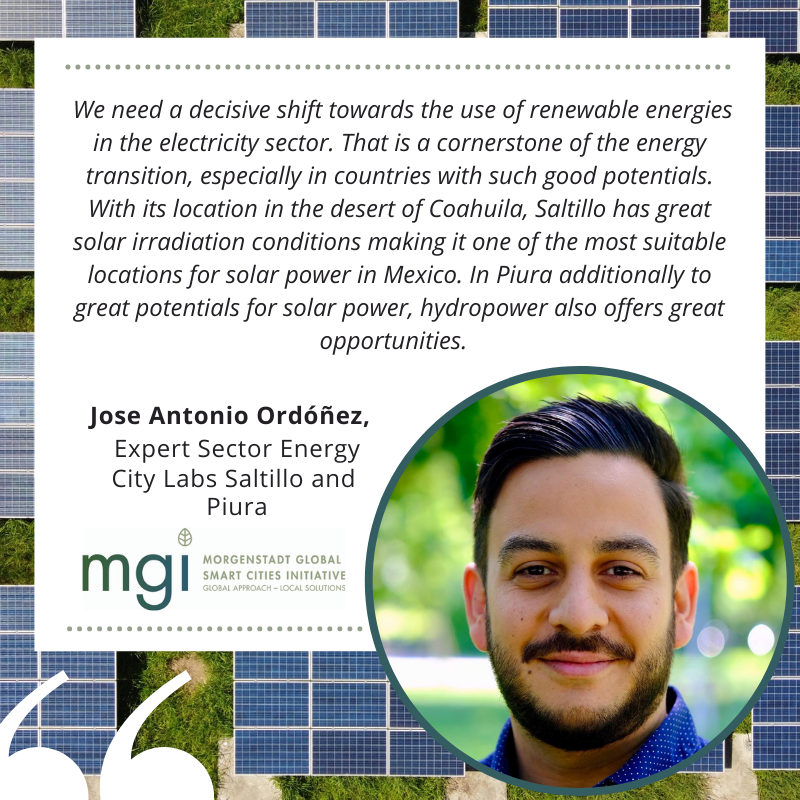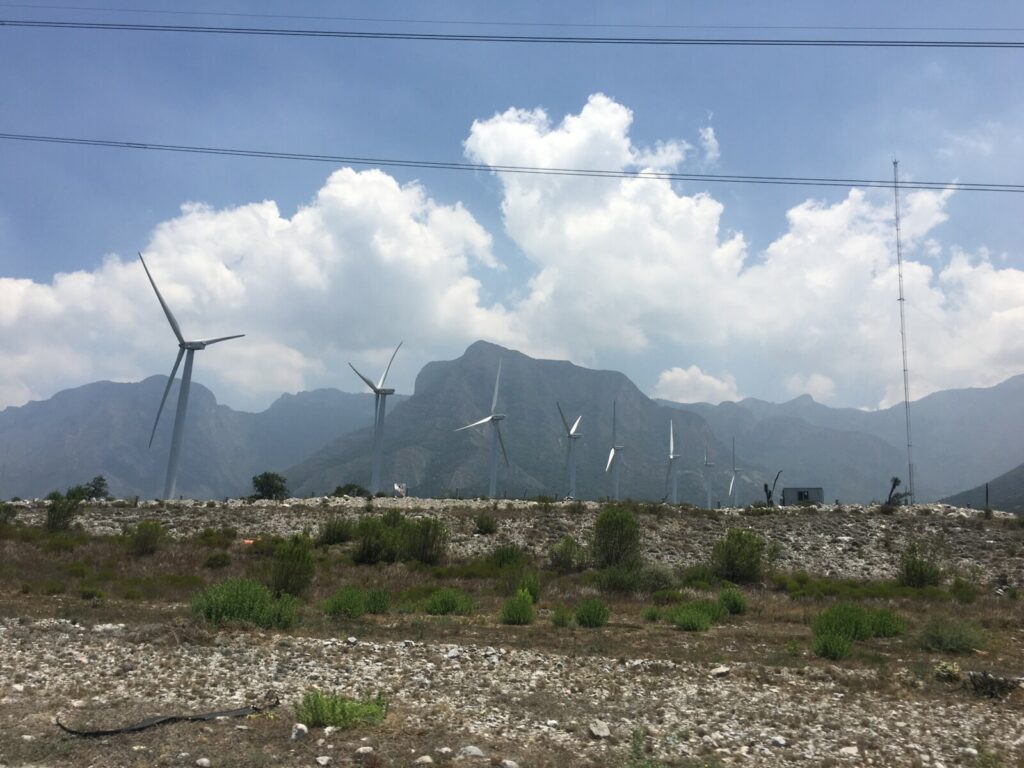Interview with the Energy Expert in the City Labs Saltillo and Piura
Jose Antonio Ordóñez, Leader for the City Lab Saltillo, Expert for the Energy Sector in Saltillo and Piura, Fraunhofer ISI

Q.: Which are the most important factors playing into energy in Saltillo and in Piura?
A.: Energy use is crucial: in our current economy, energy supply consists largely in fossil carriers, causing local pollution and greenhouse gas emissions, hence causing climate change and health issues. From a climate change perspective, keeping global warming below 2°C and thereby achieving the goal of the Paris Agreement implies having a carbon neutral economy by the middle of the century. This implies a transformation of the way our economies are organized, away from the use of fossil fuels, oil and oil products, natural gases and coal. Despite having comparably lower per capita emissions than countries like Germany or the USA, Mexico and Peru, where our City Labs Saltillo and Piura are located, will have to contribute by also aiming to keep emissions at lower levels. While Saltillo is a wealthy city, in which mobility and industrial GHG emissions determine the city´s emission profile, Piura has a comparably lower development level, meaning less automobiles and transportation of goods as well as comparably less heavy industries located there.
Q.: What are special challenges and opportunities in each city when it comes to energy?
A.: In terms of opportunities, both cities are located in regions with great potentials for renewable energy. With its location in the desert of Coahuila, Saltillo has great solar irradiation conditions making it one of the most suitable locations for solar power in Mexico. This in turn means that the cost per unit of solar electricity is cheap, as the costs of the power plant are put in relation to a very high electricity output, meaning low costs per unit of electricity. In Peru, additionally to great potentials for solar power, hydropower also offers great opportunities. In terms of challenges, the political will and institutional capacity to create a favorable framework for the deployment of renewable energy is still lacking in these countries. Costs of equity and debt are often higher in countries in the Global South, making capital-intensive renewable electricity more expensive. Also, jurisdiction over the energy sector is mostly at national level, while our projects are at local (municipal) level. This creates natural barriers in terms of jurisdiction over certain energy issues.

Q.: How do the requirements of the two cities differ regarding energy and are there maybe similarities?
A.: Saltillo´s energy use is largely determined by the mobility and industrial sector: the city is in one of Mexico´s most industrialized areas, the heart of the automobile and machinery industry. More specifically, Saltillo´s industry is organized in industrial parks, meaning that mobility towards large industrial parks in and outside of the city determines the traffic routes. Also freight mobility, that is, of manufactured goods plays a role. The Peruvian city of Piura has a comparably much lower industrialization rate. The agricultural sector plays a big role in Piura, and thus mobility of agricultural goods, as well as cooling during transportation and storage are becoming more important.
Q.: Which measures can be taken in the energy sector to contribute to sustainable development and increasing resilience towards climate change impacts in Saltillo and in Piura?
A.: Energy efficiency first! Energy savings are the easiest way of saving money and reducing GHG and local emissions. Also, we need a decisive shift towards the use of renewable energies in the electricity sector. That is a cornerstone of the energy transition, especially in countries with such good potentials. Cities exhibit a high density of population and economic activity, and while power plants are usually located further outside of cities, the demand of electricity is highest in more dense urban areas. An energy transition in the mobility sector must also take place. In cities, this can be achieved by enhancing and expanding public mobility services, shifting away from motorized towards non-motorized mobility (e.g. bicycles and pedestrian areas), and from internal combustion engines towards electric mobility or hydrogen vehicles, but also by considering mobility in urban development plans by designing cities in a way that ensures good reachability without the need for extensive transportation.
Q.: How do the pilot cities learn from each other across the sectors? Are there specific examples for best practices from the already finished City Lab Kochi that are now taken up in Saltillo And Piura?
A.: The coronavirus has made exchange between cities challenging. While events with city representatives and exchange sessions between cities where planned, they had to be canceled in the wake of Covid-19. We have organized some webinars, yet it remains challenging to find a suitable time to carry them on, especially considering the time shift between India, Germany and Latin America and the availability of a large number of participants. Nevertheless, the team of experts working on Morgenstadt across the different cities is in regular exchange. Synergies between cities and sectors are best utilized in this manner.


